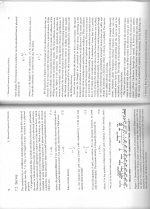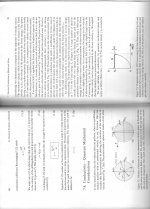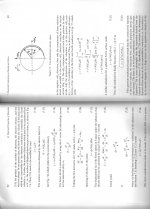@jacco
Did they have the foam because he talked so cute or such a BS?
And yes, i lost a lot of money for nothing, like most people with High End Gear.
But basically i am almost cured with snake oil and derivates of it.
There is not much free lunch..
I learned a lot in this thread here and have a lot of fun reading the dispute.
Today i make my own opinion based on that what i can hear and reproduce the situation more than one time and try to avoid basic mistakes.
I have also to say, if it sounds better to me, it can happen that there is a distorsion which i like or doesnt disturb me. Its maybe not the truth, but sometimes its better listen to a fairytale and have a good time instead of hearing clearly every mistake was made while recording or treatment thereafter. JC call this *Forgiving sound*.
In the end, what counts for me is having pleasure when listening music, feel the rhytm and the pace or getting chicken skin due the presentation of the music.
On the other hand there exist customers which want to be fooled, otherwise they dont buy some stuff.
Did they have the foam because he talked so cute or such a BS?
And yes, i lost a lot of money for nothing, like most people with High End Gear.
But basically i am almost cured with snake oil and derivates of it.
There is not much free lunch..
I learned a lot in this thread here and have a lot of fun reading the dispute.
Today i make my own opinion based on that what i can hear and reproduce the situation more than one time and try to avoid basic mistakes.
I have also to say, if it sounds better to me, it can happen that there is a distorsion which i like or doesnt disturb me. Its maybe not the truth, but sometimes its better listen to a fairytale and have a good time instead of hearing clearly every mistake was made while recording or treatment thereafter. JC call this *Forgiving sound*.
In the end, what counts for me is having pleasure when listening music, feel the rhytm and the pace or getting chicken skin due the presentation of the music.
On the other hand there exist customers which want to be fooled, otherwise they dont buy some stuff.
Last edited:
Call and ask for shipping to Russia (no problems).
From the brochure:
Each Internal Speaker Bullet Kit contains two Positive and two Negative devices. The Positive element is a custom-fabricated ‘Super Effect’ Internal Purifier with one-inch leads of a special proprietary wire. The Negative element is optimized for maximum sonic performance and quieting on the return leg of the connection.
These devices are even more f.riggin awesome than I originally thought. They can differentiate between a positive and a negative leg in two wires feeding an alternating current into a device.
so cute
Could be jealousy of a former high-school teacher who made substantially more money than a real PhD/Dr.
Development/calculations of the vdH stylus tip was done at the Delft university (van den Hul's home was just a couple of miles from the faculty).
Ben Bauer of Shure patented the first stereo moving-magnet cartridge, while a former Philips employee claimed he developed it half a decade earlier in Eindhoven. Possibly somewhat comparable sentiments in EE faculty libraries.

(without junk and oddball lunches, there would be very little enlightenment)
OK you experts, here is the rest of my lecture: '-)
Bog standard texts. Knew this years ago. (not now, but years ago)
I really dislike lectures where the speaker just reads the slides. The audience can usually read faster, then just sits there bored, waiting for the presenter to finish each sentence.
The least you could do is convert it to a powerpoint with animation.
jn
I think I must be missing something here. Ordinary copper is not good enough for an audio interconnect because of crystal grain boundaries adding (alleged) non-linearity.
Mercury is the cure
At least John has proved that he knows how to scan pages out of second year physics texts. The point is unclear, maybe even non-existent, but not everyone his age knows how to work a scanner, so mad props for that accomplishment!
I thought that's why we had grandchildren???
jn
Only a 2'nd year physics text, then point me to the more advanced texts on the same subject please.
I find it challenging to completely understand even what is presented here, especially the Quantum portion, but I guess that everybody finds it easy and obvious. So be it.
I find it challenging to completely understand even what is presented here, especially the Quantum portion, but I guess that everybody finds it easy and obvious. So be it.
One of the reasons Dr. Vandenhul went to carbon was to get rid of the 'dead zone' that he found at about 50uV.
Doesn't exist, period, otherwise virtually no strain guages or dozens of other transducers would ever work.
This is made up nonsense that can not be reproduced.
Only a 2'nd year physics text, then point me to the more advanced texts on the same subject please.
Learn this one first. You have to have a solid grasp of the basics so you can move on. If you're not completely comfortable with quantum mechanics and the associated math tools, none of the more advanced material will make much sense.
Once you've mastered things like symmetry operations and group theory, many-body QM methods, Bloch functions, density functionals, second quantization, BCS, and the like, you can either choose monographs in specialty areas within solid state physics or, better yet, read the primary literature. My own professional interest was quasi-1D conductors, so my literature collection is heavily weighted toward that.
None of this is relevant to audio (other than a convenient source of buzzwords), but it helps keep the aging mind agile (my motivation in keeping up with the literature).
Doesn't exist, period, otherwise virtually no strain guages or dozens of other transducers would ever work.
This is made up nonsense that can not be reproduced.
VdH Tips do also not work like he sez, except his test records have absolutely no modulation in the groove, then his special shapes work perfect without errors, but with modulation his tips introduce distorsions.
But the dirt in the groove can be better heard and the surface scratches also.
Modulation masks it direct proportional.
Reading his white papers is really funny!
This shortened secondary on the transformer with pole piece as core dissipates most flux modulation in the pole piece and with that eddy currents perpendicular to the pole piece. Hence no need for a slit pole piece as you propose, however thought provoking the idea.
The harder eddy currents to iron out would seem to be those caused by flux modulations across the magnetic gap. These cause eddy currents in the pole piece that are in the same direction of your proposed slices. Therefore, the gaps between them will not really hamper these currents.
Btw, it are also these vertical eddy currents which you have in aluminum VC-formers in spite of the typical single slit that prevents eddy currents in the horizontal plane. Kapton or other insulaters are therefore to be preferred as VC former, if it weren't for thermal issues.
The aluminum former slit does prevent shorted turn w/r to the vc field, but the sheet conductivity of the aluminum moving in the gap is a magnetic brake. We agree non conductive is best here.
Any conductive ring near the vc will cause lenz effect, both to the primary vc field, and the field being dragged through the ring will cause magnetic drag. While it stops flux modulation in the iron, there is a cost.
I propose elimination of all shorting rings in proximity to the vc. My slit design does that, while not compromising reluctance much.
All these entities...aluminum braking, iron eddies, shorting ring eddies, all reflect back to the terminals as a reduction in inductance as well as an increase in effective series resistance.
jn[/QUOTE]
Hi John,
Actually, what I tried to describe was the Lenz effect, differenting flux modulation along two vectors; aligned with, and perpendicular to the pole piece. Couple of thoughts:
1. a copper shortening ring fights flux modulation in the pole piece by generating back EMF. The main disadvantage as I see it is that it lowers driver sensitivity. You need to put more energy in without having more work being done.
2. a slit pole piece does nothing to prevent longitudinal flux modulation in the pole piece, and this is the distortion mechanism a shortening ring attempts to minimize.
3. resistance is determined by material, diameter and length of the VC wire. It is as such not influenced by stuff send back into the voice coil. Everything sent back into the VC might show up as you call it an increase in effective resistance, but the stuff sent back into the VC will be at a phase angle, so we should really speak about impedance here.
4. aluminum braking, iron eddies, shorting ring eddies therefore will not show up in electrical measurements as an increase in R. They will rather show up as a decrease in Qms, a decrease in impedance, or both. I can't immediately envisage a mechanisme could result in an increase in impedance, for example because of the braking effect of a conductive VC.
5. the real problem I see with a shortening ring is that a voice coil around a solid core (pole piece) with a shortening ring constitutes a lousy transformer, exactly because of eddy currents in the core. The non-linearities these eddy currents introduce will translate into distortion products. Your slit core would make it a better transformer, so I surmise it could be effective in lowering distortion. But you will still need a shortening ring, see 1. and 2.
Last edited:
Not being an EE or a physicist I would have to conclude that what Dr, Vdh found if anything was a measurement error. Some of this even I understand, these mysterious types of anomalies are very rare things until we get to the quantum states of mater. We are not looking for Quarks and Glueon's when working with audio electronics and inter-connectors. No more than I need to be concerned with magnetic monopoles or electron spins when working on speakers.
John you should know better, physics hasn't changed fundamentally since you took that in school. We may know more but the basic are still the same. Nobody has disproved Einstein yet, we are still living with the same basic rules.
John you should know better, physics hasn't changed fundamentally since you took that in school. We may know more but the basic are still the same. Nobody has disproved Einstein yet, we are still living with the same basic rules.
I guess some on this thread are way too educated for this 'simple' audio stuff...
[rant mode on]
Why are you guys keep coming back and keep posting? Don't you have anything better to do? With your 'superiority' you manage to spoil every conversation.
[rant mode off]
Best,
[rant mode on]
Why are you guys keep coming back and keep posting? Don't you have anything better to do? With your 'superiority' you manage to spoil every conversation.
[rant mode off]
Best,
- Status
- Not open for further replies.
- Home
- Member Areas
- The Lounge
- John Curl's Blowtorch preamplifier part II


